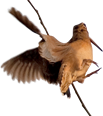What we’re reading: The Genius of Dogs

This book was published in February 2013 by the married couple Brian Hare and Vanessa Woods. Hare is an associate professor in Evolutionary Anthropology and the Center for Cognitive Neuroscience at Duke University. Woods works there as a research scientist. Both are both dog lovers.
The authors set out to scientifically prove the intelligence of dogs and to find where this intelligence originated. They define intelligence in animals by how successfully a species has managed to survive and reproduce in as many places as possible. By this definition, it’s easy to argue that dogs are the most successful mammals on the planet.
The book is divided into three parts. The essence of Part One is that dogs are inherently able to read human gestures and signals to solve various intelligence tests. In addition, dogs have communicative skills that are amazingly similar to human infants. They traveled the world studying wolves, silver foxes, New Guinea singing dogs and bonobos, a species of chimpanzee.
They concluded that dogs domesticated themselves by becoming friendlier to humans and learned how to communicate and work with us.
Part Two discusses how dogs communicate with humans. Hare and Woods prove scientifically that dogs are pack animals and that “dogs are best in a social network.”
In Part Three they compare breeds to determine intelligence levels. Ultimately (and intriguingly), Hare and Woods concluded that it can’t be proven scientifically that one particular breed is smarter than any other. One significant finding was that working breeds are better at reading human gestures than non-working breeds.
Here, the questions of how to train a cognitive dog is posed. They never really answer it but they do discuss Pavlov’s classical conditioning and B. F. Skinner’s operant conditioning. In doing so they resolve that neither completely addresses the best way to train a cognitive dog.
Hare and Woods also “prove” several things:
• Strictly using reward-based training is not a good, long-term training solution as rewards lose their effect unless frequently increased.
• Dogs learn better and faster in short sessions spaced over a period of time than in long, frequently repeated sessions.
• Dogs can learn by watching others of their own species and other species.
• Dogs know when you are paying attention to what they’re doing.
• Petting a dog, especially gentle strokes in a smooth, calm matter, has a positive effect.
All in all, the book spends a lot of time trying to scientifically prove many aspects about dogs that have been anecdotally known and used by astute trainers for many, many years. While dogs can be trained to react to various stimuli and respond accordingly, there is much more than that to dog training. Being able to read the dog, communicate with it and adjust the training on the fly are just a few pieces of the “art” of dog training.
Hare and Woods write, “Hopefully, we can transform the art of dog training into a science.” I say: Good luck.
Bottom line: Nothing in this book is new and I don’t recommend it. A much better book is The Dog’s Mind by Bruce Fogle.




